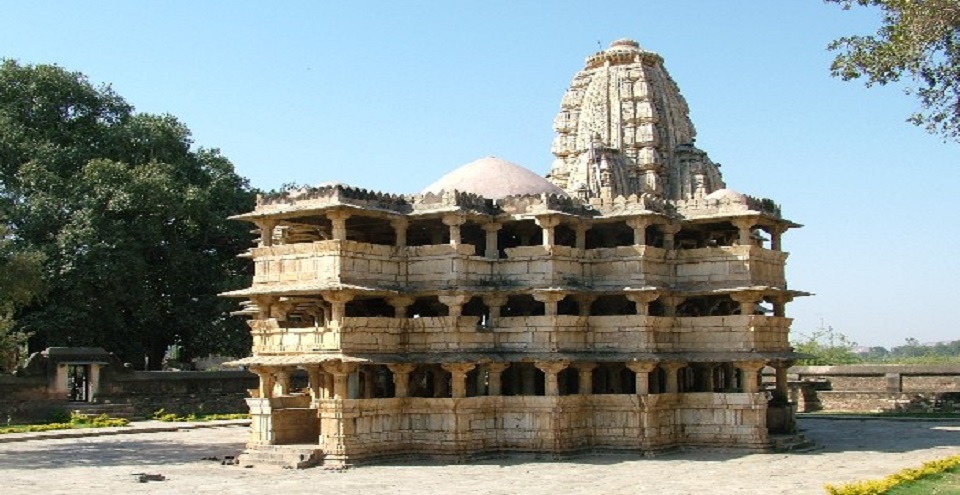
Deo Somnath Temple: An Architectural Marvel and Spiritual Haven
The Deo Somnath Temple in Dungarpur, Rajasthan, is a distinguished Hindu temple dedicated to Lord Shiva. Known for its ancient architectural style and spiritual significance, this temple is a testament to the rich religious and cultural heritage of the Dungarpur region.
Location and Historical Context
- Location: Dungarpur, Rajasthan, India
- Historical Context: Dungarpur, situated in the southeastern part of Rajasthan, is known for its historical sites and temples. The Deo Somnath Temple adds to this legacy by showcasing traditional Hindu temple architecture and reflecting the region’s spiritual history. The temple’s construction dates back to a period when intricate temple designs and religious art were prominent in Rajasthan.
Architectural and Design Features
1. Traditional Temple Architecture
Architectural Style: The Deo Somnath Temple exhibits classic Rajasthani temple architecture. This typically includes a sanctum sanctorum (garbhagriha), a pillared hall (mandapa), and a towering spire (shikhara). The design is intended to facilitate worship and create a sacred space for meditation and rituals.
Materials: Built using local sandstone or marble, the temple features the durable and aesthetically pleasing materials commonly used in Rajasthani temples. The choice of material contributes to the temple’s longevity and visual appeal.
2. Main Shrine
Deity Representation: The central deity of the Deo Somnath Temple is Lord Shiva, one of the principal deities in Hinduism. The shrine houses an idol or lingam of Shiva, which is revered by devotees. Offerings and prayers are made to seek blessings and divine favor.
Intricate Carvings: The temple is adorned with elaborate carvings and sculptures depicting various Hindu deities, mythological scenes, and religious symbols. These artistic elements enhance the spiritual ambiance and highlight the craftsmanship of the time.
3. Temple Complex
Prayer Hall: The temple includes a spacious prayer hall where devotees gather for worship and spiritual practices. This area is designed to accommodate visitors and provide a serene environment for meditation.
Surrounding Environment: The Deo Somnath Temple is set in a tranquil environment that adds to its spiritual significance. The peaceful surroundings allow for contemplation and enhance the overall devotional experience.
Cultural and Spiritual Significance
1. Spiritual Hub
Devotional Practices: The Deo Somnath Temple serves as a central place for worshiping Lord Shiva. Devotees visit the temple to offer prayers, participate in rituals, and seek blessings. The temple is an important part of the local religious life and plays a role in the spiritual practices of the community.
Festivals and Ceremonies: Major Hindu festivals dedicated to Lord Shiva, such as Maha Shivaratri, are celebrated with special ceremonies at the temple. These events include devotional services, processions, and communal activities, attracting both local and visiting devotees.
2. Cultural Heritage
Local Traditions: The Deo Somnath Temple is integral to Dungarpur’s cultural and religious heritage. It represents the traditional practices and beliefs of the region, contributing to the preservation of local customs.
Historical Importance: The temple is a symbol of Dungarpur’s historical and architectural legacy. It reflects the city’s religious diversity and the continuity of Hindu traditions in the region.
Visiting Deo Somnath Temple
1. Planning Your Visit
Timings: The temple is generally open throughout the day, with specific timings for prayers and rituals. It is advisable to check the temple’s schedule and any special events before planning your visit.
Entry Guidelines: There may be no formal entry fee, but visitors should follow the temple’s rules and guidelines. Dress modestly and maintain decorum to respect the sacred space.
Local Customs: Engaging in local customs and observing the temple’s traditions will enhance your visit. Learning about the temple’s significance and participating in rituals can provide a deeper understanding of its role in the community.
2. Exploring the Area
Nearby Attractions: While visiting Deo Somnath Temple, consider exploring other attractions in Dungarpur, such as the Dungarpur Fort, Sahastra Bahu Temple, and Juna Mahal. These sites offer additional insights into the region’s history and cultural heritage.
Local Markets: Dungarpur’s local markets offer a chance to experience traditional Rajasthani crafts, textiles, and cuisine. Visiting these markets can provide a broader perspective on the region’s cultural and economic life.
Experience Sacred Tradition
The Deo Somnath Temple in Dungarpur stands as a remarkable example of Rajasthani temple architecture and religious devotion. Its traditional design, spiritual significance, and cultural heritage make it a significant destination for those interested in exploring the rich traditions of Rajasthan.
Immerse yourself in the spiritual and architectural splendor of Deo Somnath Temple, where traditional beliefs and artistic craftsmanship converge. Let the temple’s serene atmosphere and rich cultural traditions enhance your visit to Dungarpur and provide a deeper appreciation of the region’s religious legacy.
